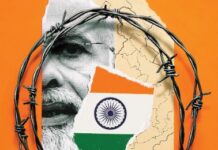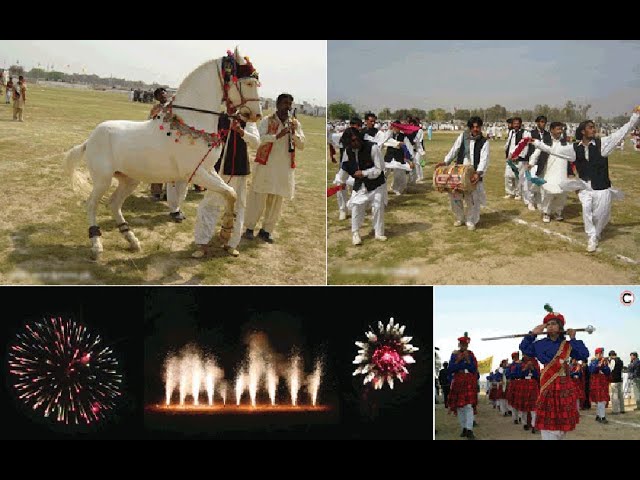The Horse and Cattle Show Sibi is commonly known as ‘Sibi Mela’. It is an historical national event that has been celebrated since the last many centuries. However, during British rule, it improved with more official activities under the governance of Sir Robert Sandeman, in 1885. The present government of Balochistan has finally decided to hold this grand event of the province from 4 to 8 March.
Sibi, ‘the Hot Bowl of Asia’, lies 160 km away from Quetta valley to the south east. The historical Bolan Pass connects these two leading cities of Balochistan province. The name ‘Sibi’ is derived from the word ‘Sewi’ (a Hindu lady of Sewa race) which is still a popular and native name of the city, being used by the people. A quick historic review of this city shows that it had remained under the control of Multan, the Amirs of Sind and Kandahar. This territory came under the rule of the Kalhoros (Amirs of Sind) in 1714. The Durranis took over the territory from the Kalhoros and appointed local governors, particularly the Barozai clan of the Panni Pathans. Later, the British, like other Afghan areas, obtained this territory through the treaty of Gandamak in 1879.
The winter and spring seasons of Sibi have been an attraction spot for the inhabitants of colder parts of the province. Hence, since the 15th century, this town has been honored as convention place/Jirga place of Baloch and Pathan tribal leaders from all areas of the province. With these social and tribal activities, the dealings for the sale and purchase of animals gradually transformed into an animal market. Then, the market used to be held annually during the spring season.
The inclusion of ‘Camel Caravan’ trips to the historic Bolan Pass and the site of ancient civilization, Mehr Garh, can enhance the event. Restoration and renovation of historic Sivi Fort (misnomer; Chaker Killa) and ‘Suhbat Inn’ is essential for conserving cultural inheritance. These historic places are ideal avenues for conducting cultural programmes. Therefore, the federal government needs to cooperate with the provincial government for making this festival more attractive, action packed and lively.
When English rulers occupied the territory, they realized the importance of this conventional tradition. To remain relevant, they functionalized the annual traditional “Darbar” with official ceremonials. Later on, for formal gathering of tribesmen, they built a residency and the Victoria Memorial Hall known as “Jirga Hall”. They also improved the annual animal market with pleasurable colours of rural people. Since independence, leaders of the nation have attended it during their respective periods of governance. Quaid-e-Azam Muhammad Ali Jinnah, the first Governor General of Pakistan, also honored this annual event and addressed the annual Sibi Darbar in February 1948. After that, it has become a tradition that the opening ceremony of the Sibi Mela is presided over by the Head of the State. Unfortunately, the federal and provincial governments have shown an apathetic attitude and ave neglected to honour this historic event for a couple of decades.
However, this event provides a greater opportunity for people to get together. The staff of the Livestock and Dairy Development Department and tribesmen flock with their animals from all over Balochistan, Sindh, Khyber Pakhtoonkha and Punjab. This historic event has enveloped itself with animal market, animal breeds competitions, industrial exhibition, cultural and children programmes, sports competitions, flower shows, cavalcades, floats, tent pegging, buzkashi, paratrooping, handicrafts, tribal dresses, folk dances, firework and other things of interest for rural people.
The nucleus of the event and source of economic blessings of the region is the ‘Bhagnari’ cattle breed. This cattle breed is the heaviest draught breed of Pakistan. The Bhagnari cattle are, in fact, an unearthed “Grey Gold’ which has shown significant potential in the lives of farmers. Progressive farmers of the region rear this breed with utmost affection and attention throughout the year in order to participate in the Mela because it brings pride and prestige for them.
In a nutshell, Sibi Mela has profound impact on the lives of people of this area. It has deep cultural, social and economic impact. It has been observed that the natives of the area usually organize their social ceremonies like marriages in connection with this event. Likewise, farmers used to exchange financial matters (sale and purchase) during or after Sibi Mela.
The Sibi Mela serves multi-pronged functions. Furthermore, such kind of traditional activities are rare in the country and abroad as well. Hence, it is imperative to improve such events so that they can be a source of tourism. The newly established Mir Chaker Rind University Sibi can also play its role in advancing scientific and literary knowledge by holding international conferences on Agriculture, Livestock, Culture and Literature during Mela celebrations.
The inclusion of ‘Camel Caravan’ trips to the historic Bolan Pass and the site of ancient civilization, Mehr Garh, can enhance the event. Restoration and renovation of historic Sivi Fort (misnomer; Chaker Killa) and ‘Suhbat Inn’ is essential for conserving cultural inheritance. These historic places are ideal avenues for conducting cultural programmes. Therefore, the federal government needs to cooperate with the provincial government for making this festival more attractive, action packed and lively.























